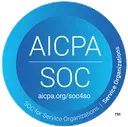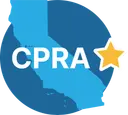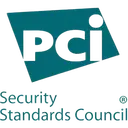What is SOC 2?
SOC stands for System and Organization Control and is an objective, third-party system that tells customers that they can trust your company to handle their information with the utmost care. This is the compliance audit most commonly sought by startups, particularly SaaS, as it’s relevant for any business that uses the cloud to store data.
The five Trust Services Criteria—Security, Availability, Processing Integrity, Confidentiality, and Privacy—serve as essential components of the SOC 2 compliance framework, guiding organizations in managing and protecting customer data accurately.
To become SOC 2 compliant, a startup must choose at least one or more trust services criteria and a type to test against.
Understanding SOC 2
SOC 2 is a widely recognized standard for evaluating the security and compliance of service organizations. Developed by the American Institute of Certified Public Accountants (AICPA), SOC 2 is based on the Trust Services Criteria (TSC), which are a set of principles and criteria for assessing the security, availability, processing integrity, confidentiality, and privacy of a service organization’s systems. By adhering to these criteria, service organizations can demonstrate their commitment to protecting customer data and maintaining robust security controls. SOC 2 compliance assures customers that their data is handled with the highest level of care and integrity, making it a crucial standard for any business that processes sensitive information.
What’s the difference between SOC 1, SOC 2, and SOC 3?
There are three types of SOC reports:
- SOC 1: Formerly called Service Organization Control 1, it’s now referred to as System and Organization Control 1. SOC 1 evaluates the effect of service organization controls on financial statements. For example, say your SaaS startup provides billing services to large companies. Chances are your customers will require the startup to become SOC 1 compliant because the startup’s billing process impacts their financial reporting.
- SOC 2: Formerly called Service Organization Control 2, it’s now referred to as System and Organization Control 2. SOC 2 is a procedure that examines service providers. The audit determines if they are securely managing 3rd party data, like personal information, to protect information and ensure privacy. SOC 2 reports focus on controls pertinent to key areas like security, availability, and processing integrity, making them service organization relevant. Compliance with SOC 2 is usually a requirement when considering SaaS providers.
- SOC 3: Formerly called Service Organization Control 3, it’s now referred to as System and Organization Control 3. SOC 3 is a public report of internal controls over security, availability, processing integrity, and confidentiality. Like all other SOC certifications, it was established by the Auditing Standards Board of the American Institute of Certified Public Accountants’ (AICPA) Trust Service Criteria (TSC).
What are SSAE 16 and SSAE 18?
You might hear the term ‘SSAE’ when referring to SOC audits. This refers to the AICPA’s Statement of Standards of Attestation Engagements: the regulations auditors use to evaluate companies and more specifically evaluate compliance controls.
SSAE 16: In 2011 the AICPA revealed SSAE 16, formerly known as SAS 70, which required auditors to evaluate a startup’s internal controls and the impact the organization can have on the control environment. This was particularly important for auditors to accurately assess a company’s financial statements (SOC 1).
SSAE 18: In 2017 the AICPA replaced SSAE 16 with SSAE 18, an assessment standard covering both SOC 1 and SOC 2. The main purpose of the update was to demand companies to take more control and accountability over third-party vendors. The new standard, which is still used to this day, requires businesses to apply the same risk assessment standards to vendors they work with directly and indirectly.
What are the Five Trust Services Criteria?
Issued by the AICPA, the Trust Services Criteria evaluates how companies process information and manage customer data. Security criteria are a mandatory component evaluated during SOC 2 audits. This covers five components, which include security, privacy, availability, processing integrity, and confidentiality. In order to define the scope of the audit and the necessary controls, SOC 2 reports must address one or more of the criteria.
What is the COSO framework?
In 2013, the AICPA combined the TSC framework with the COSO framework, which is used to access the design, implementation, and maintenance of a startup’s controls. The COSO framework helps in assessing the design and operating effectiveness of a startup’s controls, ensuring they meet the Trust Services Criteria through a thorough evaluation process.
Complementary to the TSC, COSO’s five components include:
- Risk assessments
- Information and communication
- Existing control activities
- Monitoring activities
- Control environments
Put together, the TSC and COSO frameworks allow businesses to work towards a clear set of guidelines while protecting their security and data integrity posture.
SOC 2 Compliance and Audits
Achieving SOC 2 compliance is a critical milestone for any service organization. The process begins with a thorough audit conducted by an independent auditor who evaluates the organization’s internal controls and systems. This audit involves a detailed review of the organization’s policies, procedures, and controls, as well as testing the operating effectiveness of these controls over a specified period. The goal is to ensure that the service organization meets the stringent requirements of the SOC 2 standard. Upon successful completion, the auditor issues a report that attests to the organization’s compliance, providing assurance to customers and business partners that their data is secure and well-managed.
Security Controls
Security controls are the backbone of SOC 2 compliance, designed to protect customer data and ensure the security, availability, processing integrity, confidentiality, and privacy of a service organization’s systems. These controls include a range of measures such as access controls, firewalls, intrusion detection and prevention systems, and encryption. Implementing and maintaining effective security controls is essential for service organizations to safeguard customer data and comply with the SOC 2 standard. By doing so, organizations can mitigate the risk of data breaches and demonstrate their commitment to data security and integrity.
Protecting Customer Data
Protecting customer data is at the heart of SOC 2 compliance. Service organizations must implement robust controls to safeguard sensitive information, including personally identifiable information (PII). This involves using encryption to protect data in transit and at rest, establishing strict access controls to limit data access to authorized personnel, and implementing data backup and recovery procedures to ensure data availability in case of an incident. Additionally, organizations must handle and process customer data in accordance with their data usage and privacy policies, ensuring transparency and trust. By prioritizing data protection, service organizations can build and maintain customer confidence.
What are the types of SOC 2 reports?
There are two types of SOC 2 reports companies can obtain: Type 1 and Type 2. The difference between Type 1 and Type 2 is design versus operating effectiveness.
A Type I tests design and operating effectiveness by looking at your description of controls at a particular point in time. A Type II tests operating effectiveness by collecting evidence of your controls in operation over a 6 to 12-month period.
What kinds of companies need SOC 2?
If your business does anything with data and software, or uses cloud computing, chances are you will need a SOC 2 audit at some point soon or in the future. Specifically designed for businesses that store data in the cloud, SOC 2 applies to almost every SaaS business (and any company that uses the cloud!)
A SOC 2 report is particularly important for growth-focused B2B startups that are looking to move upmarket and attract bigger customers. Today, enterprise buyers now require businesses to become SOC 2 compliant.
While most startups seek out a SOC 2 audit once reaching their Series A or B, it may be beneficial to do so beforehand if you’ve already begun selling to enterprise customers.
Why is SOC 2 compliance important for startups?
SOC 2 compliance is important because it:
- Helps businesses move through enterprise procurement
- Establishes credibility between you and your competitors
- Protects sensitive data from hacks or threats
Enterprise companies expect startups to meet the same procurement cycles and compliance requirements as other vendors. In many cases, bigger customers will ask you to become SOC 2 compliant before working with them.
How Long Does it Take to Get a SOC 2?
The timeline for obtaining a SOC 2 report can vary based on the complexity of the audit and the size of the service organization. On average, the SOC 2 audit process can take anywhere from 6 to 12 months to complete. This duration includes the time needed to prepare for the audit, conduct the audit, and issue the final report. Preparation involves ensuring that all necessary controls and procedures are in place and functioning effectively. Once the audit is complete, service organizations must maintain ongoing compliance with the SOC 2 standard, which may involve annual audits and continuous monitoring to ensure that controls remain effective and up-to-date.
SOC 2 as a competitive edge
Savvy startups also use SOC 2 compliance as a competitive differentiator and partner with providers, like Thoropass, to get SOC 2 compliant efficiently and seamlessly. Compliance doesn’t just tell enterprise buyers that you are open for business. It’s a powerful brand and marketing message that signals to the world that your startup is more established, credible, and attuned to your customer’s needs.
Compliance protects your startup against devastating financial and reputation losses. It ensures your company is built on solid processes that remain strong and secure as your team grows, your product becomes more complex, and you take on bigger clients. Without it, you put yourself, your startup, and your customers at risk of losing it all.

Related Posts
Stay connected
Subscribe to receive new blog articles and updates from Thoropass in your inbox.
Want to join our team?
Help Thoropass ensure that compliance never gets in the way of innovation.













.png)